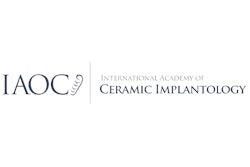
The superior biocompatibility of ceramic implants compared to other implant materials has been proven many times in both in vitro and in vivo studies. This has led to an "explosion" in the use of zirconia in dentistry and dental implantology in particular. But it took a long time for ceramic implants to gain traction in dentistry.
 Dr. Sammy Noumbissi.
Dr. Sammy Noumbissi.Despite having been in clinical use for more than 40 years, ceramic implants had difficult beginnings, which were mostly due to limitations of the materials used in the early stages. Also, early designers were not adapted to ceramics.
Furthermore, the manufacturing protocols and modern formulas of load-bearing ceramics, such as zirconia, have significantly improved their structural stability and mechanical behavior when used as an implant material. Various formulations of zirconia have been created -- all achieving superior biocompatibility and composed of a corrosion-free, hypoallergenic material compared to implant metal alloys.
The excellent osseointegration and long-term performance under function in the oral environment make zirconia a suitable and predictable load-bearing implant material.
Dr. Sammy Noumbissi, MS, is the president of the International Academy of Ceramic Implantology (IAOCI) and has been a ceramic implant specialist for more than 10 years. He received his Doctor of Dental Surgery degree from Howard University in Washington, DC, in 1998. He has also earned a certificate in implant dentistry and a Master of Science degree in implant surgery.
The comments and observations expressed herein do not necessarily reflect the opinions of DrBicuspid.com, nor should they be construed as an endorsement or admonishment of any particular idea, vendor, or organization.



















